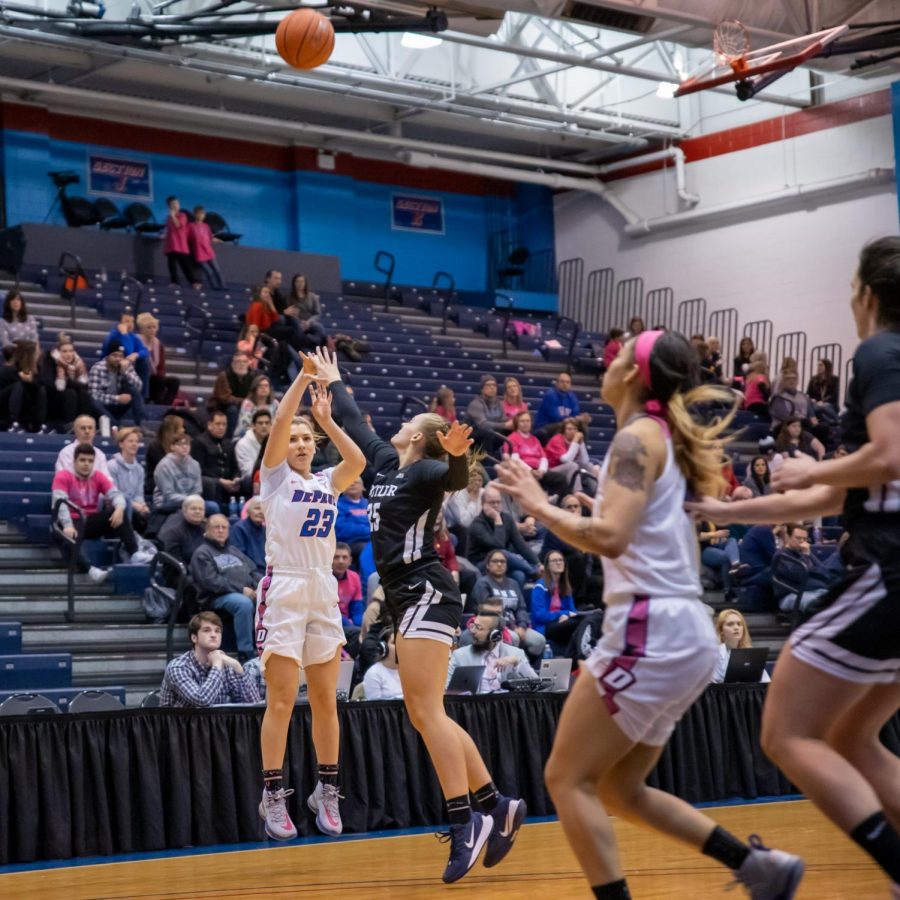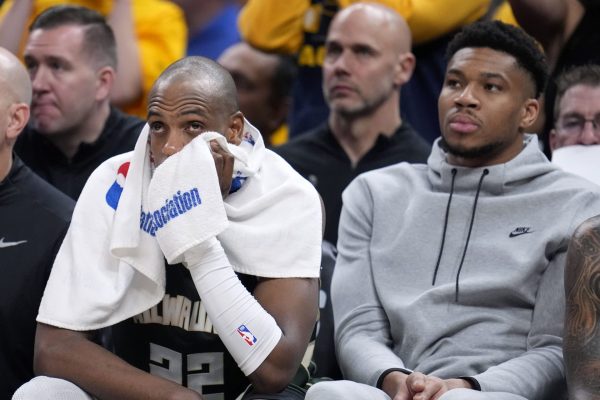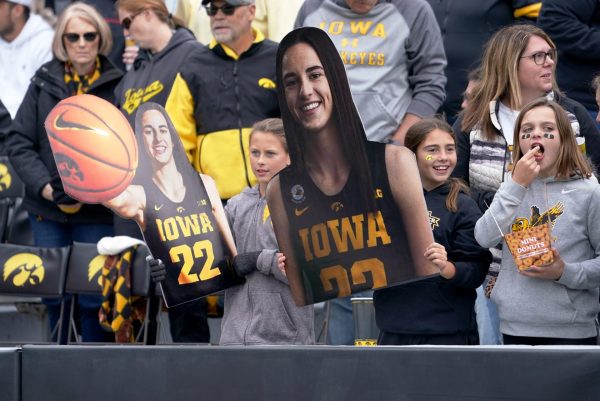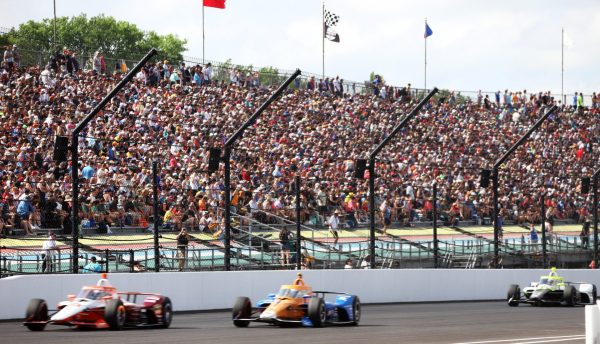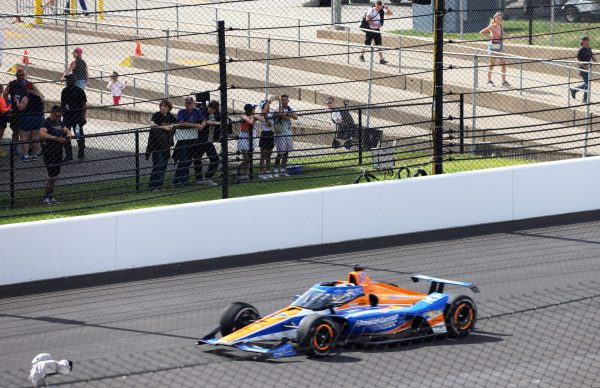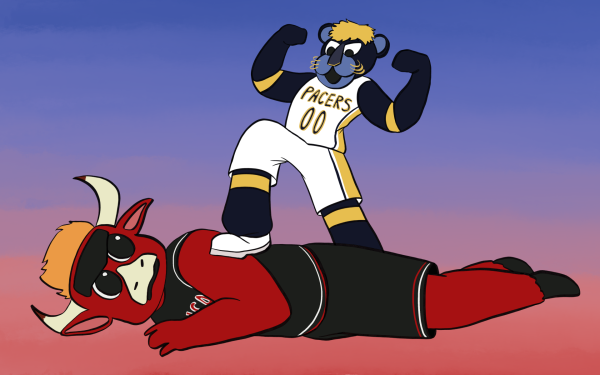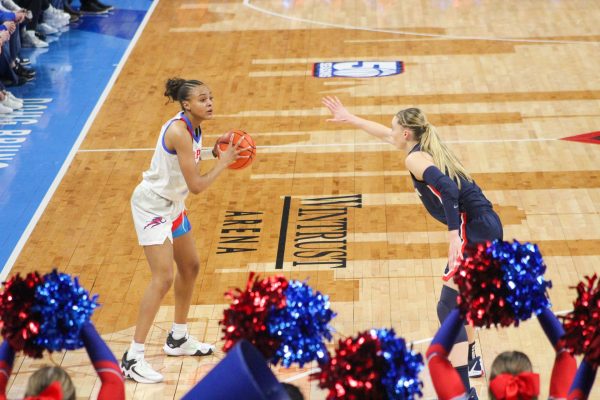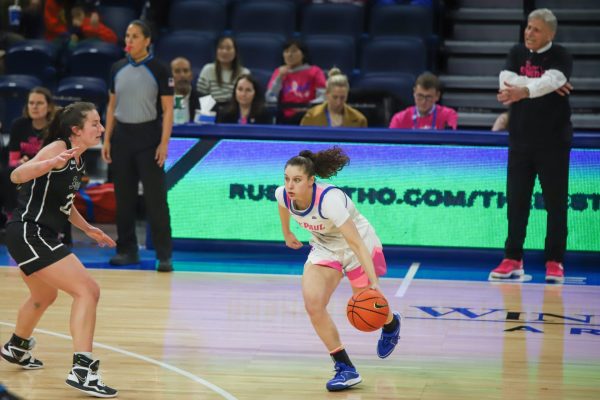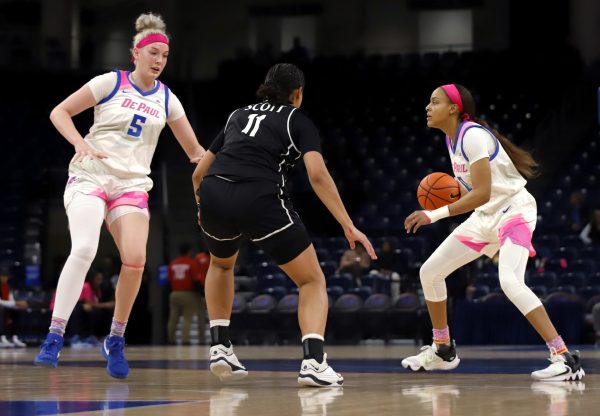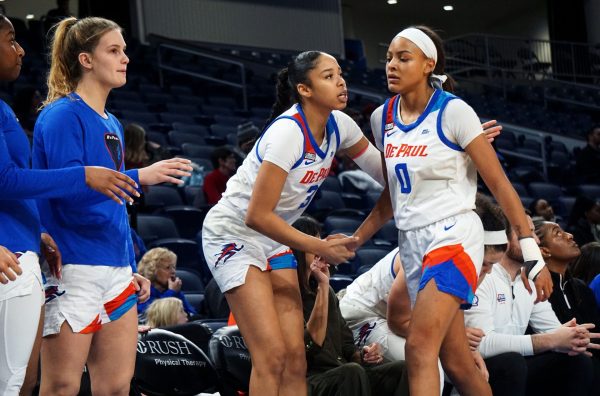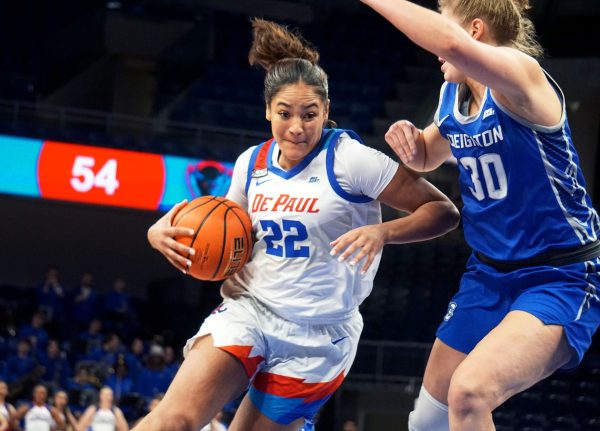DePaul women’s basketball succeeds, but where is the campus support?
Jonathan Aguilar | The DePaulia
Junior guard Dee Bekelja takes a jumper against Butler on Feb. 14 at McGrath-Phillips Arena. The women’s team went undefeated at McGrath this year, going 11-0.
Six women’s basketball division one college teams have made the NCAA tournament 16 or more years in a row. Would it surprise the average DePaul student that our own women’s team has made the tournament 17 years in a row? Would it surprise the average DePaul student that the same team has won the Big East tournament in four of the last six years?
This brings up the question…why do people not follow women’s basketball enough?
DePaul senior guard Kelly Campbell spoke of the ways that people tend to not watch women’s basketball as much because of the mindsets people have about the way the sport is played.
“A lot of people assume women’s basketball is not as fun to watch because we cannot dunk or might not be as fast or jump as high, but we still work just as hard and play the game the right way,” she said. “It does not make a lot of sense that people don’t want to watch us.
“People just say negative things, but they do not really know the work we put in,”
Senior forward Chante Stonewall, DePaul’s leading scorer this year, said that the history of basketball affects how people view women’s basketball.
“It was always men,” she said. “It got expanded to black men playing basketball, then finally women got a chance to play, colored women got a chance to play.”
Head coach Doug Bruno portrayed the lack of support for women’s sports as a gender issue and by the evolution of sports itself.
“There is a place of superiority inside the male gender that believes superiority over a female gender,” Bruno said. “It is a gender issue.”
The cross section of sports and its roots in violence and warfare also play a part in the ways people treat and cover women’s sports, according to Bruno.
“It is controlled viewable warfare,” he said. “I do not ever want to compare sports to war…but that is where sports in America come from.
“Sports has originated in the context of preparation and play for warfare, and that was always done by males. Now we come to a 21st century where females are competing as well.”
Although the media covers women’s sports, Campbell pointed to that coverage paling in comparison to men’s sports.
“We do definitely get a lot of coverage and it is nice that we have a couple games on TV, but I think women’s basketball overall is definitely under covered,” Campbell said, “whether it’s media or the fans. We definitely do not get enough support.”
Bruno attributed the lack of support to the low levels of coverage for women’s sports.
“Women receive somewhere in the two-to-eight percent range of coverage in sports,” he said.
“When the [University of Connecticut] Huskies put together the streak that beat John Wooden’s streak, it really was not very publicized till it got to the very end,” he said. “Even then the coverage was very minimal compared to what it would have been if it was a men’s Duke team.”
Among the six teams who have made the NCAA tournament for more than 15 years, DePaul is dead last in average home game attendance this year, despite the success they have achieved.
Stonewall shared a similar sentiment as Campbell while also expressing some disappointment over the crowds last year at the Big East tournament at the Wintrust Arena.
“The Big East tournament I thought we were going to have a lot of people, but I was surprised,” she said. “I thought at least the lower bowl was going to be full since we had fans from Marquette and DePaul.
“It was saddening, but at the same time the people who were there, just know we appreciated them.”
Along with DePaul’s success, the team’s style of play features a fast paced, pass friendly and scoring heavy approach that leads to a very entertaining pace of play.
The team also employs a swarming defense that is seventh in the nation in turnovers forced per game.
“Take the time to watch specifically how we play,” Stonewall said. “It is not a ‘boring’ style of play.”
With the Big East tournament beginning March 6, the team is still perplexed that students are not aware of their success.
“When I talk to people around campus they do not even know that we are having a tremendous season,” Stonewall said. “Some of the students I see at the men’s games – because we are in the student section – I have never seen them at the women’s games. I do pay attention to our student section because [I do really] want to say thank you.”
While Campbell showed her appreciation for the fans who do come out, she was similarly unhappy with the fact that the crowd sizes do not match the success level of the team.
“We appreciate any support, but it is kind of crazy when you look around and ‘we are a top 15 team in the country and we have like this many people,’” Campbell said with emphasis on ‘this many.’
The split between the crowds for both teams can create some frustrations for the players, but they continue to hope that fans will recognize the great things they are doing as well.
“We mostly get frustrated when we see how many people the men get compared to what we get,” Campbell said. “Why don’t [fans] want to come see us play, we are doing great things as well.”
With less than one week remaining till the Big East tournament, and with the potential for two NCAA tournament home games later in March, the time for attention is now. Fans should make their way to the Wintrust Arena starting March 7 to see their ranked basketball team try to add another accolade to their stunning resume.


